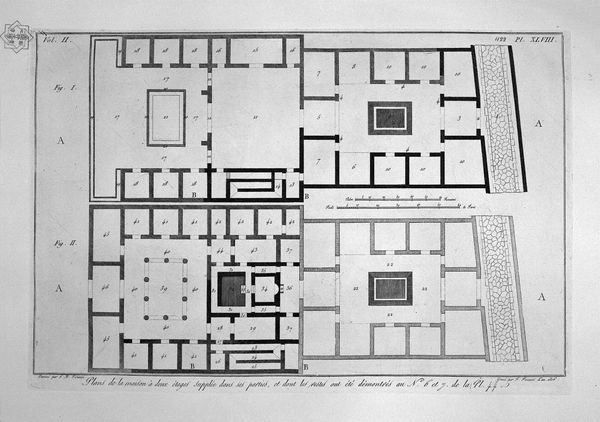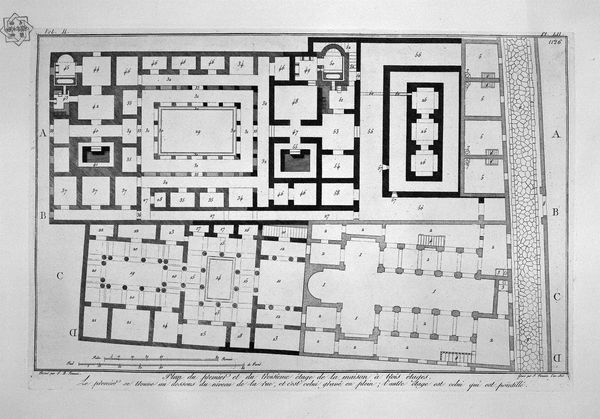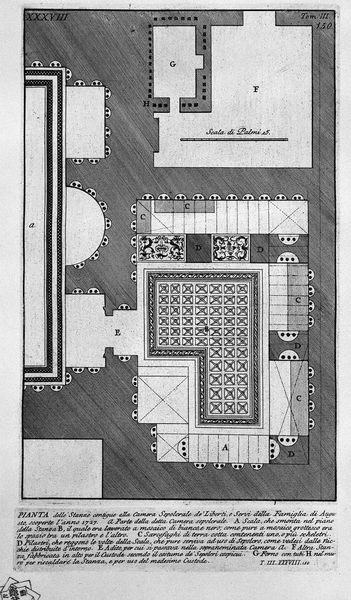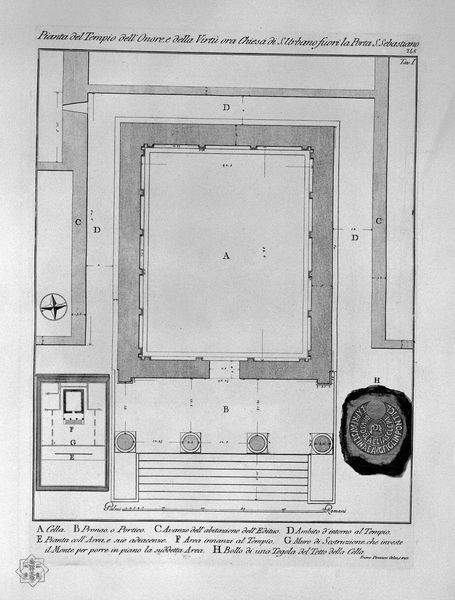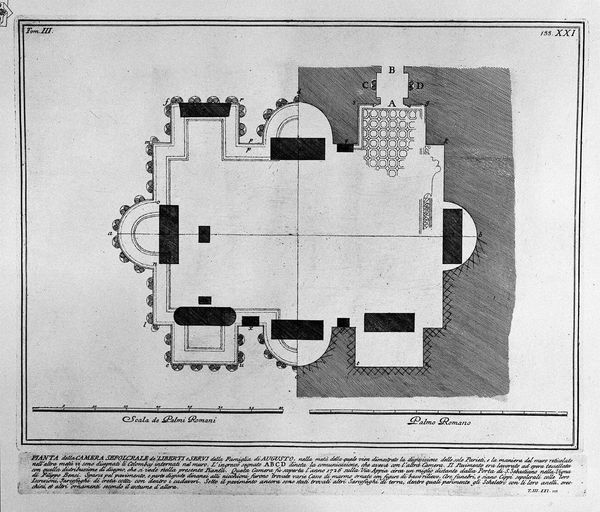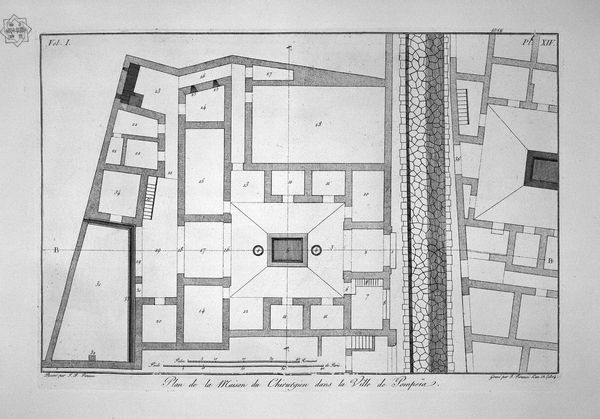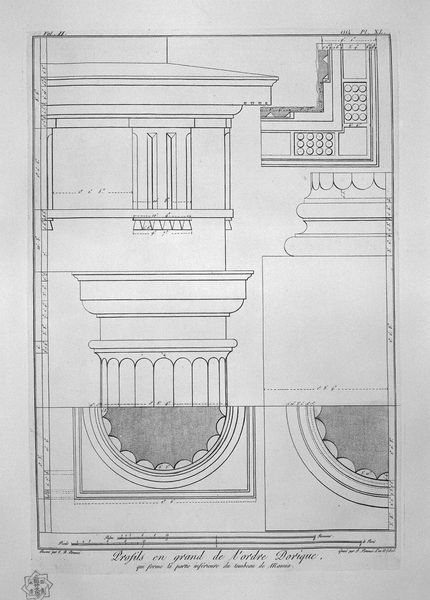
The Roman antiquities, t. 1, Plate XLIV. Plan of Mount Capitoline and its fortress; Perspective of the two horns or stones that stood in the sides of the Capitoline 1756
0:00
0:00
drawing, print, engraving, architecture
#
drawing
# print
#
text
#
geometric
#
ancient-mediterranean
#
arch
#
line
#
pen work
#
cityscape
#
engraving
#
architecture
Copyright: Public domain
Giovanni Battista Piranesi created this print, "Plan of Mount Capitoline," as part of his Roman Antiquities series. The stark monochrome and precise lines present a rigorous architectural layout. Rectangles, squares, circles, and semicircles are methodically arranged, creating a visual language of spatial organization. Piranesi uses the visual language of architectural drawing to explore themes of power, knowledge, and representation. His precise linework and attention to detail lend an air of scientific accuracy, yet the sheer scale and complexity of the plan suggest something beyond mere documentation. Piranesi's vision of Rome reveals the city not just as a physical space but as a construct, built upon layers of history, interpretation, and imagination. Consider the blank areas alongside the detailed structures. Piranesi highlights the contrast between what we know and what remains unknown or unrecoverable. This visual tension captures the essence of historical inquiry, reminding us that our understanding of the past is always partial and subject to interpretation.
Comments
No comments
Be the first to comment and join the conversation on the ultimate creative platform.



